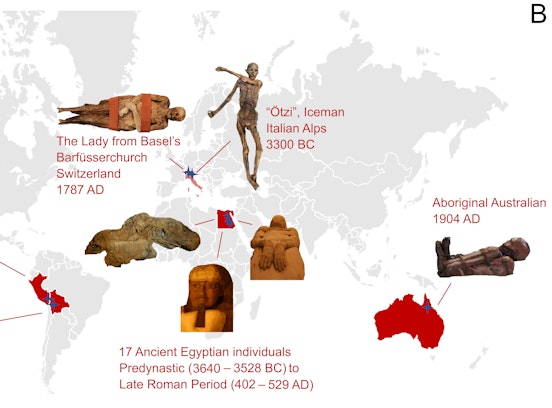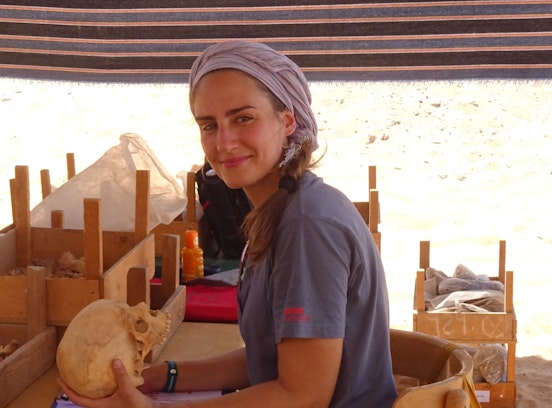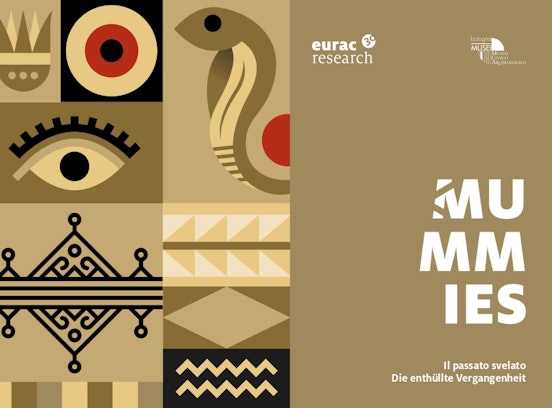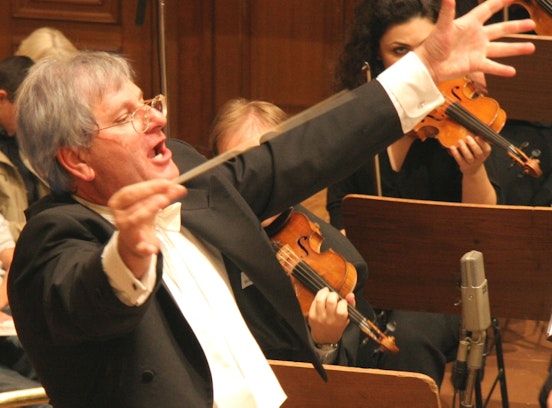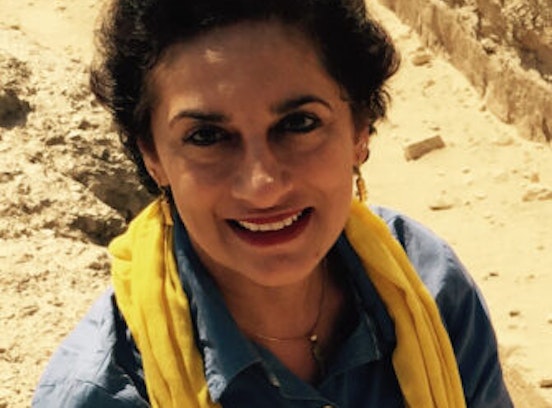Institute for Mummy Studies - News & Events - Nuestros Ancestros
Nuestros Ancestros
A visually interactive catalog containing a selection of the mummified remains and skulls of pre-Columbian individuals from the MUNARQ – The National Museum of Archaeology in La Paz’s anthropology collection.
MUMBO is the first comprehensive bioarcheological study of mummified human remains and pre-Columbian skulls from Bolivia: the project which was initiated in November 2021 has to date, bought together experts in, anthropology, bioarcheology, metagenomics, ancient DNA, paleoradiology, cardiology and conservation from Bolivia, Peru, Germany, Italy and America.
Over the past few years an immense trove of bioarcheological data has been collected from the remains of these individuals using computer tomography, biological sampling, photographic documentation and 3D imaging from which a variety of information regarding burial practices, life styles, genetic relationships and pathologies to name but a few, have been brought to light.
In addition to this significant collection of data, a unique collaboration has been established through an inter-institutional cooperation agreement between the Eurac Research and the Plurinational State of Bolivia’s Ministry of Cultures, Decolonization and Despatriarchalization.
Together these institutions have developed the framework for ethical analysis and display of this cultural treasure. The importance of ethical exhibition of the remains cannot be underestimated as it not only serves to provide a link between Bolivia’s people of the past but also those of today, furthermore, the carefully considered approach to display is in line with honoring the deceased individuals rather than displaying them as trophies and as such seeks to reinforce ancestral knowledge of the material, traditions, mortuary practices and rituals and depart from colonial visions.
The remains of over 60 mummified individuals and over 500 human skulls are being preserved and studied at MUNARQ - the National Museum of Archaeology in La Paz, Bolivia where since the initiation of the project, the committed work of the MUMBO Team from the Eurac Research, Institute for Mummy Studies and Bolivian colleagues from the MUNARQ have undertaken to create a visual catalog of this Bolivian cultural heritage. The result is “NUESTROS ANCESTROS”.
The catalog is a culmination of extensive anthropological research, and within its pages are the detailed renditions of 50 specimens from the anthropological collection at the Museum. The specimens chosen were selected according to technical-scientific criteria as well as to provide an inclusive perspective of mortuary practices and cranial deformation techniques in pre-Columbian Americas. The catalog also includes a systemic and sensitive representation of the individual known as SAPHI (our roots in Quechua) an Inca mummy that took 129 years to return home, repatriated from the United States in August 2019. The mummy was an Inca girl believed to have been born more than five centuries ago and who died of unknown causes. She is one of the best-preserved Bolivian mummies in the collection.
The catalog also describes the mummification process in Bolivia, the traditions to worship the ancestors and the motivations and techniques for intentional cranial deformation in the Andes, citing amongst other reasons a persistent need to create an aesthetically pleasing demeanor, a visibly recognisable demographic group or for ritualistic purposes. The latter option also having bearing on another anthropological practice, that of trephinations which may have also fallen into the ritualistic remit as well as one that had a more medical/ curative purpose. Moreover, this virtual document incorporates QR codes with which to scan the models to visualize them in great detail in 3D on a website particularly designed for this purpose (https://sketchfab.com/munarq)
The catalog documents the significant achievements made possible by the financial aid and invaluable contribution from the Province of Bolzano. Marie Skłodowska-Curie Actions – Seal of Excellence Grant, Award Number: 5814/2021, Provincial - L.P.14.




